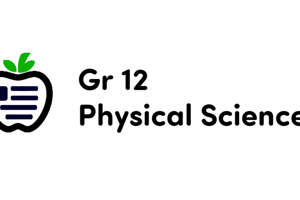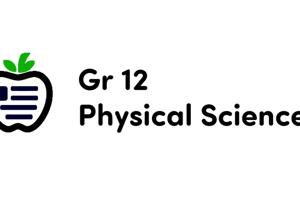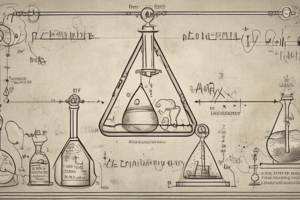Podcast
Questions and Answers
What is the main difference between physical changes and chemical changes?
What is the main difference between physical changes and chemical changes?
- Physical changes involve the rearrangement of atoms, while chemical changes involve the formation of new substances. (correct)
- Physical changes are irreversible, while chemical changes are reversible.
- Physical changes involve changes in temperature, while chemical changes do not.
- Physical changes involve the formation of new substances, while chemical changes do not.
What is used to convert a word equation to a chemical equation?
What is used to convert a word equation to a chemical equation?
- Atomicity for elements and valency for compounds (correct)
- Molecular weight
- Atomic mass
- Atomic number
Why is balancing chemical equations important?
Why is balancing chemical equations important?
- To alter the reactants and products
- To ensure the conservation of mass (correct)
- To change the physical states of the substances involved
- To increase the rate of reaction
In a chemical equation, where are the reactants located?
In a chemical equation, where are the reactants located?
What do physical states (solid, liquid, gas, aqueous) represent in a chemical equation?
What do physical states (solid, liquid, gas, aqueous) represent in a chemical equation?
Which characteristic is associated with evolution of gas during a chemical reaction?
Which characteristic is associated with evolution of gas during a chemical reaction?
Study Notes
- The video focuses on chemical reactions and equations in chemistry, explaining how to identify physical and chemical changes in everyday scenarios.
- Physical changes involve reversible processes like melting ice or boiling water, while chemical changes lead to the formation of new substances, such as rusting of iron or ripening of fruits.
- Chemical reactions involve reactants on the left side and products on the right side of the equation, with new substances formed during the process.
- To convert a word equation to a chemical equation, atomicity is used for elements and valency for compounds.
- Balancing chemical equations is essential to ensure the conservation of mass, where the number of atoms of each element must be the same on both sides of the equation.
- Physical states (solid, liquid, gas, aqueous) are denoted in chemical equations to indicate the state of each substance involved in the reaction.
- Characteristics of chemical reactions include changes in state, color, evolution of gas, change in temperature, and formation of a precipitate.
- Evolution of gas occurs when gases are produced during a reaction, such as hydrogen in the reaction of zinc with hydrochloric acid.
- Change in temperature is observed in reactions like quicklime reacting with water to produce heat.
- Formation of a precipitate refers to the insoluble solid formed in a solution, such as lead iodide in the reaction between potassium iodide and lead nitrate.- The reaction described forms a yellow precipitate (PPT), which indicates the formation of an insoluble substance in the solution.
- The question posed is to write the balanced chemical equation for a reaction that involves the presence of sunlight producing silver and bromine.
- The request is to include the physical states of the substances involved in the chemical equation.
- The author encourages viewers to respond to the question in the comments section.
- Additionally, the author mentions a video on different types of chemical reactions, providing a link in the description for viewers to watch.
Studying That Suits You
Use AI to generate personalized quizzes and flashcards to suit your learning preferences.
Description
Test your knowledge of balancing chemical equations with physical states included. Learn about identifying physical and chemical changes, the process of converting word equations to chemical equations, and characteristics of chemical reactions like gas evolution and temperature changes.



